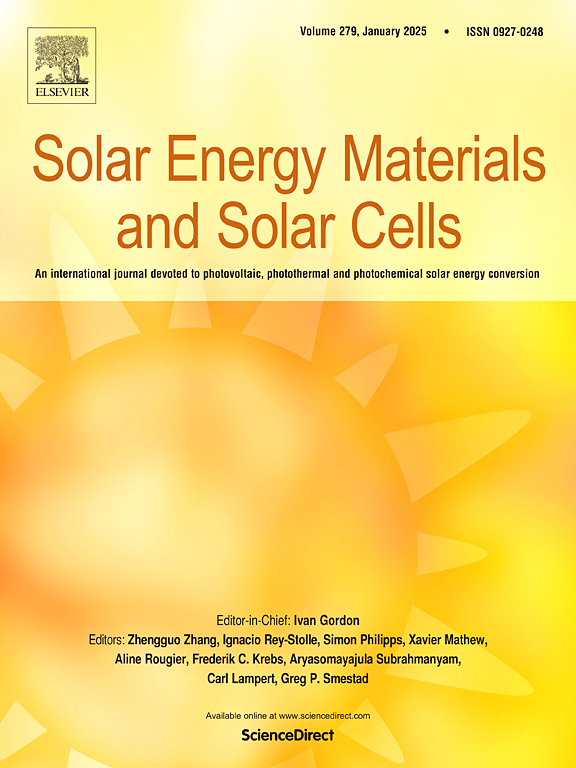Co-annealing of PECVD boron emitters and poly-Si passivating contacts for leaner TOPCon solar cell fabrication
IF 6.3
2区 材料科学
Q2 ENERGY & FUELS
引用次数: 0
Abstract
This study investigates the feasibility of a single-step annealing process for tunnel oxide passivating contact (TOPCon) solar cell fabrication to replace the conventional two-step approach. We present a novel method using a single thermal treatment to simultaneously form the boron emitter at the front and poly-Si-based passivating contact at the rear of the device. Both are based on layers deposited by plasma-enhanced chemical vapor deposition (PECVD). First, we tailor the boron emitter profile. We achieved boron emitter profiles with surface concentrations ranging from and depths between 100 and 600 nm by adjusting the deposition parameters and annealing conditions. Secondly, we show that -type poly-Si layers are suitable for co-annealing when an additional N2O plasma treatment is applied to tunnel oxide formed by exposure to UV-O3. This approach enables the achievement of up to 720 mV and contact resistivity . Finally, we demonstrate the viability of the co-annealing process with a proof-of-concept solar cell, which shows a promising power conversion efficiency of 21%.
PECVD硼发射体和多晶硅钝化触点的共退火,用于更薄的TOPCon太阳能电池制造
本研究探讨了隧道氧化物钝化接触(TOPCon)太阳能电池单步退火工艺的可行性,以取代传统的两步退火工艺。我们提出了一种新的方法,使用单一的热处理,同时形成硼发射器在前面和多晶硅基钝化触点在后面的装置。两者都是基于等离子体增强化学气相沉积(PECVD)沉积的层。首先,我们定制硼发射器的轮廓。通过调整沉积参数和退火条件,我们获得了表面浓度为3×1019to1×1020cm−3,深度为100 ~ 600 nm的硼发射器轮廓。其次,我们发现当对UV-O3暴露形成的隧道氧化物进行额外的N2O等离子体处理时,n型多晶硅层适合于共退火。这种方法可以实现高达720 mV的iVoc和接触电阻率≤100mΩcm2。最后,我们用一个概念验证太阳能电池证明了共退火工艺的可行性,该电池显示出21%的有希望的功率转换效率。
本文章由计算机程序翻译,如有差异,请以英文原文为准。
求助全文
约1分钟内获得全文
求助全文
来源期刊

Solar Energy Materials and Solar Cells
工程技术-材料科学:综合
CiteScore
12.60
自引率
11.60%
发文量
513
审稿时长
47 days
期刊介绍:
Solar Energy Materials & Solar Cells is intended as a vehicle for the dissemination of research results on materials science and technology related to photovoltaic, photothermal and photoelectrochemical solar energy conversion. Materials science is taken in the broadest possible sense and encompasses physics, chemistry, optics, materials fabrication and analysis for all types of materials.
 求助内容:
求助内容: 应助结果提醒方式:
应助结果提醒方式:


